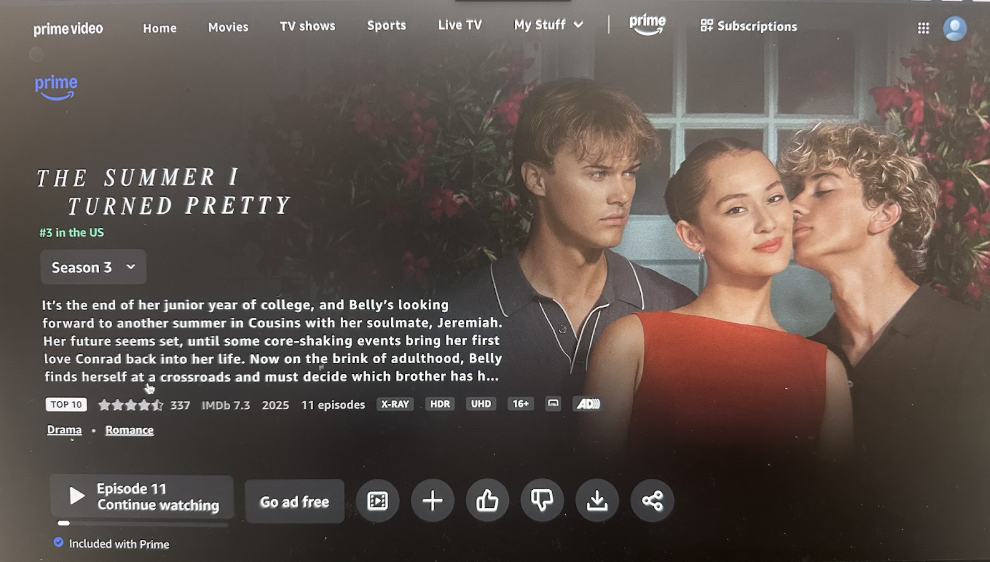COVID-19: The Death of Movie Theatres
Theatre Industry Struggles to Stay Open, Companies Find Other Ways to Release Films
Photo by uberculture on Creative Commons
As a result of COVID-19, many companies, such as movie theatres have struggled to remain operational, even after the end of the quarantine mandate. With the evolution of streaming services and without the promise of new movies, many theatre companies have gone bankrupt. Will COVID-19 be known as the death of the theatre industry?
April 6, 2021
At the start of the quarantine mandate in 2020, many businesses struggled to remain operational without the income earned from customers. Among the small shops and restaurants, the movie theatre industry was one of the many businesses that faced the possibility of permanent closure. Unable to rely on the production of new films and without the ability to successfully adapt to new quarantine regulations, COVID-19 may be the cause of the death of movie theaters. As a result, the pandemic has led to the rapid evolution of the accessibility of newly-released films.
As one of the largest movie theatre organizations in the world, The National Association of Theatre Owners, or NATO, has worked alongside Directors Guild of America (DGA), the Motion Picture Association (MPA) and numerous directors in an attempt to save movie theatres from going out of business. According to NATO, the pandemic has caused 93% of movie theatre companies to suffer significant losses and almost 75% of their usual income. However, despite their best efforts, it appears that many movie theatres will not recover from these losses.
Earlier in March, the popular Alamo Drafthouse chain filed for bankruptcy after it was unable to reopen two-thirds of its theatres according to USA Today. The company plans on closing multiple locations throughout the country, including two in Texas. Nonetheless, the chain hopes for a brighter future as they negotiate with companies such as Altamont Capital and Fortress Investment Group. They are not the only movie theatre chain that suffered; after attempting to reopen a few locations in February and March, companies such as Regal, AMC and Cinemark have announced the closure of most sites for at least another 12 weeks.
To combat the lack of customers and movie options a few theatre companies have found unique ways to gain popularity once again. According to CNBC, AMC plans on lowering the price of tickets to just 15 cents once they are able to reopen. The movie theatre will also be showing throwback films such as “Back to the Future” and “Grease” until new movies are released. Similarly, theatres such as Moviehouse and Eatery allow customers to rent an entire theatre for $150. The private watch party plan guarantees that customers will only be surrounded by the people they invite, limiting exposure while watching a film. Nevertheless, movie theatres are still struggling to bring back the pre-pandemic crowds.
Along with the lack of customers, theatres have wrestled with a lack of content while companies such as Disney adapted to appeal to a population that was stuck in quarantine. On Nov. 12, 2019, Disney launched their new streaming service, Disney Plus, providing yet another streaming app that became an extremely popular form of entertainment for people stuck at home during the pandemic. As a result, even when Texas Governor Greg Abbott permitted the re-opening of business, including movie theatres, it soon became clear that customer interests had shifted, especially with the pandemic still looming over the country.
Following this shift in customer interest, Disney began offering new movies, such as “Mulan,” “Raya and the Last Dragon” and “Soul” on Disney Plus. In fact, as Forbes, an American business magazine, stated in an article, 50% of homes in the U.S with children under the age of 10 had subscribed to Disney Plus by the end of 2020, and thus had multiple movie options to watch from home. While some of the newest content requires an additional premium fee to watch for the first few months, eventually Disney Plus allows all members to watch the films. Other services, such as HBOMax, offered anticipated movies such as “Wonder Woman 1984” as soon as the films were released in theatres.
Additionally, other popular streaming services, such as Netflix, have hit an all-time high as people look to TV for entertainment while stuck at home. Despite economic uncertainty, most streaming services have gained subscriptions as first-time users turn towards television as a way of coping with boredom and anxiety during this time of uncertainty, as Forbes notes in the article “How Is The Quarantine Affecting The Streaming Wars.”
While streaming movies from home had started before the pandemic, this more direct method of releasing movies is an original adaptation to quarantine challenges, with many other companies either following Disney’s path or pushing the release dates for films to next year. And with the multiple streaming services available, movie theaters lack the content needed to gain the same crowds that they had before COVID-19, as explained by CNBC.
As COVID-19 regulations begin to loosen up, movie theatres continue to desperately promote their businesses in an attempt to stay open. Many big-theatre names have had to close a variety of locations. There is no question that the pandemic has brought significant changes to the world, including the movie theatre industry, which may never recover from the worldwide shutdown. With the end of COVID-19, will a new era of movie-watching emerge? Or will movie theatres overcome the challenges that threaten to put them out of business?






![Senior Jett Mckinney stores all the clothes in his own room, with half of it stored in his closet along with his personal clothes, and the rest taking up space in his room.
“There’s been times [when] there’s so much clothing stored here and it gets overwhelming, so I end up having to sleep somewhere else in the house,” Mckinney said.](https://cphswolfpack.com/wp-content/uploads/2025/11/DSC_0951-1200x800.jpg)



![Broadcast, yearbook and newspaper combined for 66 Interscholastic League Press Conference awards this year. Yearbook won 43, newspaper won 14 and broadcast took home nine. “I think [the ILPC awards] are a great way to give the kids some acknowledgement for all of their hard work,” newspaper and yearbook adviser Paige Hert said. “They typically spend the year covering everyone else’s big moments, so it’s really cool for them to be celebrated so many times and in so many different ways.”](https://cphswolfpack.com/wp-content/uploads/2025/05/edited-ILPC.jpg)




![Looking down at his racket, junior Hasun Nguyen hits the green tennis ball. Hasun has played tennis since he was 9 years old, and he is on the varsity team. "I feel like it’s not really appreciated in America as much, but [tennis] is a really competitive and mentally challenging sport,” Nguyen said. “I’m really level-headed and can keep my cool during a match, and that helps me play a bit better under pressure.” Photo by Kyra Cox](https://cphswolfpack.com/wp-content/uploads/2025/09/hasun.jpg)

![Bringing her arm over her head and taking a quick breath, junior Lauren Lucas swims the final laps of the 500 freestyle at the regionals swimming competition on date. Lucas broke the school’s 18-year-old record for the 500 freestyle at regionals and again at state with a time of 4:58.63. “I’d had my eye on that 500 record since my freshman year, so I was really excited to see if I could get it at regionals or districts,” Lucas said. “ State is always a really fun experience and medaling for the first time was really great. It was a very very tight race, [so] I was a bit surprised [that I medaled]. [There were] a lot of fast girls at the meet in general, [and] it was like a dogfight back and forth, back and forth.” Photo by Kaydence Wilkinson](https://cphswolfpack.com/wp-content/uploads/2025/03/Kaydence-2.7-23-edit-2.jpg)


![As her hair blows in the wind, senior Brianna Grandow runs the varsity girls 5K at the cross country district meet last Thursday. Grandow finished fourth in the event and led the varsity girls to regionals with a third place placement as a team. “I’m very excited [to go to regionals],” Grandow said. “I’m excited to race in Corpus Christi, and we get to go to the beach, so that’s really awesome.” Photo by Addison Bruce](https://cphswolfpack.com/wp-content/uploads/2025/10/brianna.jpg)

















![Holding a microphone, baseball booster club president Chris Cuevas announces the beginning of the annual cornhole tournament. The event has been held for the past two years and is designed to raise money for the baseball program in a fun way. “We’re a baseball team, so people love to compete,” Cuevas said. “So we figured we better do something that gets [their] attention. They want to compete. It’s not a hard sport to do, and we have all different [skill] levels [of participants].” Photo by Henry Mueller](https://cphswolfpack.com/wp-content/uploads/2025/11/Henry-715-1200x900.jpg)


















